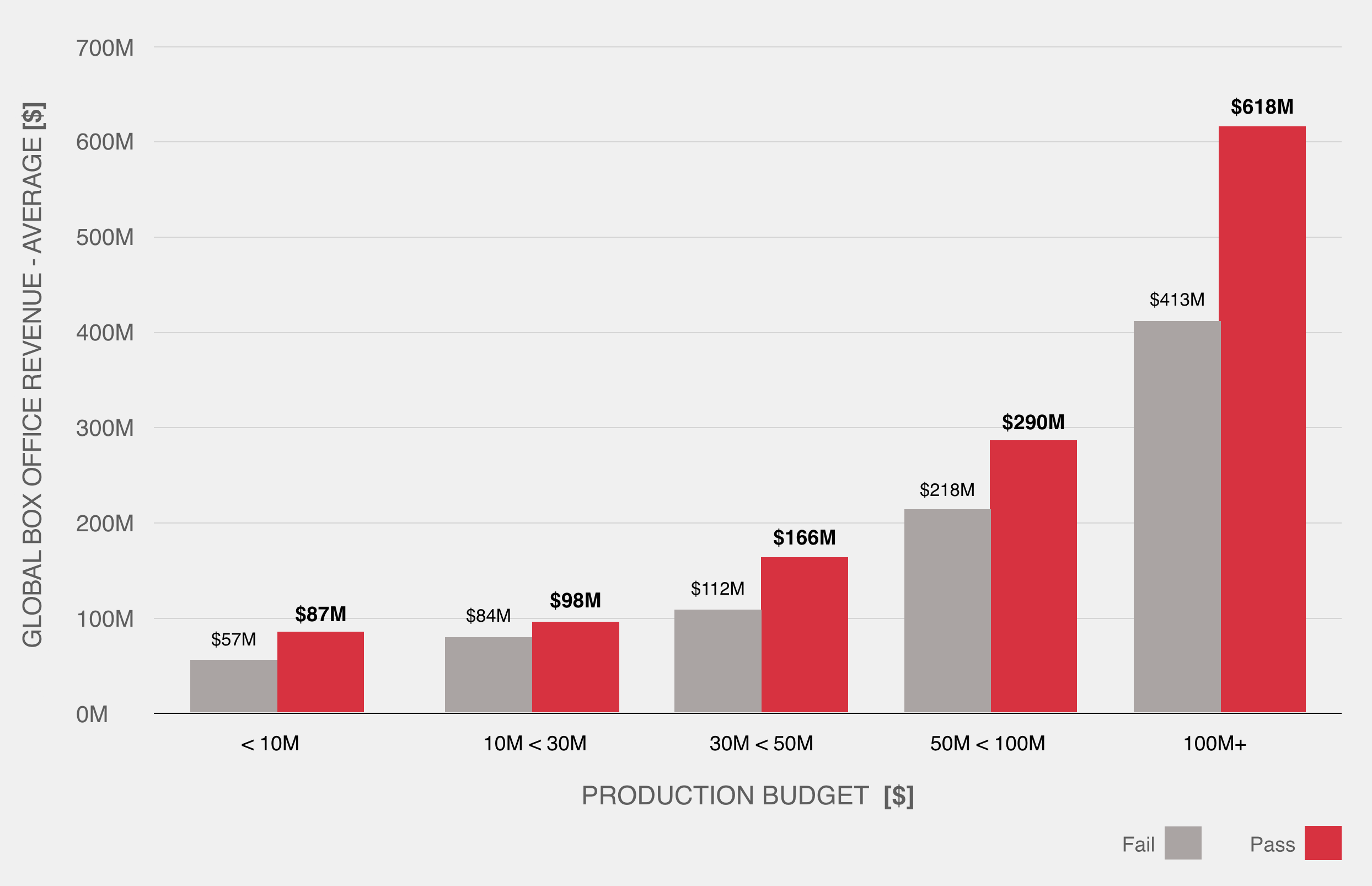Female-led films outperform at box office for 2014-2017
The data also indicates that films that pass the Bechdel Test, which measures the portrayal of women in film, surpass the box office returns of films that fail this test.
The analysis below uses box office revenue and production budget data from Gracenote, a Nielsen company, for top-grossing U.S. films. The team examined the 350 top-grossing films released between 2014-2017, for which budget data had been reported in Gracenote's Studio System offering. Further data on the Bechdel test was available for 319 of these films, and was sourced from bechdeltest.com.
This analysis builds on previous work from CAA about the positive correlation between global box office returns and racial/ethnic diversity in casting.1 Others highlighting diversity and inclusion in film include the Geena Davis Institute on Gender in Media, FiveThirtyEight, USC Annenberg Inclusion Initiative, USC Viterbi School of Engineering - Signal Analysis and Interpretation Laboratory, the UCLA Division of Social Sciences, The Black List, and The Pudding.2
Presented by


































